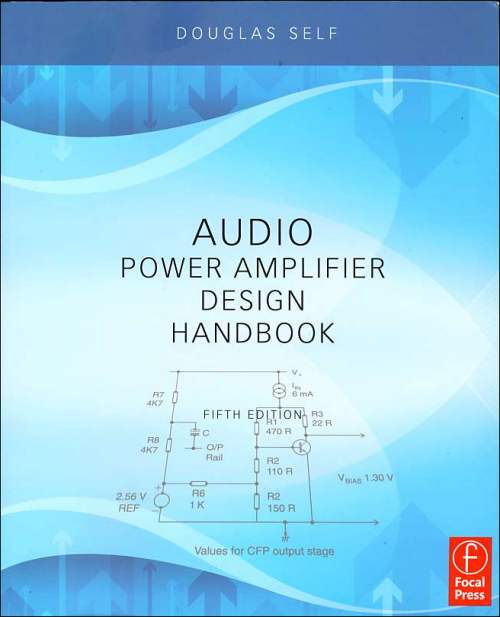(Please note that the books on this page are not available directly from The Signal Transfer Company. Go to any good bookshop or contact Newnes/Elsevier directly)
Learn more from:
.
.
.
Fig 9.7 (19K file) . Fig 9.19 (21K file)
It includes the first complete explanation of the complex
business of power amplifier distortion. It shows how the many
sources of non-linearity can be eliminated or minimised,
allowing amplifiers to be designed and constructed with
performance that would have been thought impossible a few
years ago. It provides information that is indispensable
whether you are making one amplifier for the ultimate home system, or
setting up a production line to make 10,000 units a year.
This book is a unique collection of detailed information on audio power amplifier design. The Fifth Edition is a major update which adds more than 50% in size. Almost every section contains new content. From any good/big bookshop, or via Elsevier or Amazon. See link below:

583 pages. ISBN 978-0-240-52162-6
Early copies of the First Edition had Fig 9.7
on p207, and Fig 9.19 on p220 corrupted.
You can download clean versions here:
This is a uniquely detailed guide to the theory and practice
of audio power amplifiers, running from the elegantly simple
mathematics of the differential pair to the practicalities of
bolting down power transistors properly.
THE CONTENTS INCLUDE:
New Findings in amplifier design
Science & Subjectivism
The Performance Requirements
A Short History of Amplifier Design
How Negative Feedback really works
The Eight distortion mechanisms
Diagnosis via distortion residuals
The input stage: how it can cancel distortion
The Voltage-Amplifier Stage
Output stages
Amplifiers and reactive loads
Anomalous loudspeaker behaviour
Interchannel crosstalk
Compensation, Slew-Rate, and Stability
Power Supplies and PSRR
Class-A amplifiers, with a design example
Class-G amplifiers
FET output stages: why they are a bad idea
Load Invariant Power Amplifiers
Thermal compensation and thermal dynamics
Amplifier and Loudspeaker protection
Grounding systems
Mechanical design constraints
Testing, Fault-finding and safety requirements
NEW MATERIAL IN THE FIFTH EDITION:
Completely new chapter on the Class-XD Crossover-Displacement
principle as used by Cambridge Audio
Big new section on double input stages
A big new section on power transistors with internal sensing diodes
Big new section on input stage common-mode distortion
More on:
Four-stage amplifier architectures
Amplifier bridging
Amplifier stability
Advanced line input stages
Ultra-low-noise design
Current-mirrors
Better DC servo design
Output stages with gain
Inrush current suppression
Transformers and hum fields
The subtleties of cooling fan control
Thermal protection
DC offset protection
Infra-red control
Signal activation
12V trigger activation
Professional power amplifiers
The latest safety regulations and requirements
... and much more

